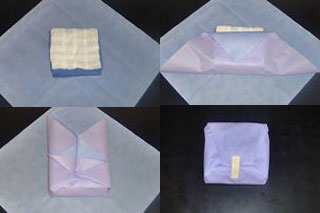The Packaging Shelf-Life Test is a real-time evaluation for packaging material/systems that are applied by the user (e.g. hospitals). Test packs are prepared, sterilized, and stored under real-time aging conditions for the duration of the test. Weekly environmental monitoring and pack rotation are performed. After storage, the packs are transferred to our sterility suite where the contents undergo a test of sterility. Sterilization validations and penetration studies should be completed prior to shelf life testing to establish the sterilization cycle parameters. Our Packaging Shelf-Life testing is done in conformance with criteria from:
- ISO 11607
Study Outline
The Packaging Shelf Life study is designed to simulate the use of the products in a hospital or clinical situation. Test packs are prepared by the lab according to sponsor specifications and placed on the shelf for the designated storage interval. Typical storage intervals are 30, 60, 90, 180, and 365 days. A typical pack consists of a sterile barrier system (wrap, tray, pouch, etc.) that contains a product (actual product, mock product, coupons, or gauze). Biological and chemical indicators (BIs and CIs) are typically included to verify that the packs were adequately sterilized.
AORN’s recommended sterilization practices define event-related sterility as “Shelf life based on the quality of the packaging material, storage conditions during transportation and amount of handling of item.” They suggest that the following factors affect shelf life:
- Type and configuration of packaging materials
- Number of times a package is handled before use
- Number of personnel who may have handled the package
- Storage on open or closed shelves
- Condition of storage area (cleanliness, temperature, RH)
- Use of dust covers and method of sealing
Our shelf life procedures integrate weekly handling and rotation in addition to the normal post-sterilization handling transfer to the storage shelves. All shelf life packs are stored on open wire shelves, which permit the highest levels of microbial fallout. The cleanliness of the environment is monitored weekly using both passive (fallout) and active (Anderson sampler) collection techniques. Temperature and relative humidity (RH) are recorded weekly to provide full environmental storage records.
After the designated storage interval, the packs are transferred to our sterility suite for testing. Packs with actual product are tested in the same manner as routine lot release samples.
Recommended replicates: The number of packs to test at each storage interval is left to the discretion of the sponsor. Historically, sets of 3 to 30 have been tested. We recommend preapproving the test plan, including the number of samples, with the FDA prior to test initiation.



